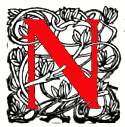
owadays, those who would previously have been called gypsies or Roma or Romanies are described as "travellers," in order to avoid discrimination. In fact both labels are inadequate: people who move on intermittently from one place to another, without establishing permanent homes, may have English, Welsh, Scottish or Irish backgrounds, or may be descended from Romanies in Europe, who may ultimately have come from the Indian subcontinent. Fairground communities, pedlars, vagrants and tramps may also be included. Some broad distinctions were recognised in the 2021 Census in England, which had a "Gypsy or Irish Traveller" category, as well as a new "Roma" category ("Gypsy, Roma and Irish Traveller ethnicity summary").
The general way of life of such people is well known, and was quite familiar to the Victorians, especially since it generally involved quite long stays in one place, and a fairly regular round of destinations:
In nineteenth-century England, ... many Gypsies settled down during the winter months and made all kinds of products (clothes-pegs, skewers, flowers, etc.). At the beginning of spring they started to travel and sell their manufactured wares, as well as offer all kinds of services; during the summer many of them were hired as seasonal labourers, whereas during the autumn fairs were visited. [Lucassen 169]
As for the fairs, which included race meetings as well as agricultural fairs with horse-dealings, side-shows and other amusements, gypsies were closely associated with the fairground people, setting up selling pitches alongside them, and working as hired hands for them, or even providing performances on fair days. Some might rise within the fairground community itself, to become regular showmen.

A gypsy gathering in a photograph of 1889, from a postcard in the collection of Simon Cooke.
Despite playing such a familiar part in society, these travellers remained on its fringes, preserving their own communities, with their own ways of speaking and living. Some Victorians found their aura of bohemian independence fascinating. Writers seemed particularly drawn to them: "the 'gipsy brat' Heathcliff, Matthew Arnold’s scholar-gypsy, Edward Rochester’s Gypsy masquerade, and Maggie Tulliver’s defection to a Gypsy camp on the outskirts of town reflect the persistence of a widespread dependence on the tropes of Gypsy life in British writing and culture...." (Nord 1). Artists too responded to this marginalised group in a variety of ways, from sympathising with their struggles, to admiring their freedom, and being intrigued by their encampments and caravans, their unconventional and often colourful attire, and indeed their sheer difference. This fascination reached its peak at the end of the period with the domestic involvement and gypsy paintings of Augustus John.
However, the general public tended to view the gypsies with suspicion. They had a reputation for fraudulent transactions, pickpocketing and thieving, and making unsightly and inconvenient roadside stops. They were even suspected of spreading infections as they travelled (see Mayall 90). When it came to paid labour, such as hop-picking in the south of England, wage discrimination was common, and they had little recourse to justice. The courts themselves were apt to mete out discriminatory treatment. While the academically inclined studied their differences — their racial origins, language and customs — social reformers and church missionaries sought to bring them closer to the mainstream. These days there is greater recognition of their rights, but, at the local level, they are still likely to meet with spirited opposition as they pass through residential areas or infringe on tourist locations. — Jacqueline Banerjee
Gypsies in Literature (a selection)
- "A 'Personally Conducted Party'" by Louis Jennings
- Matthew Arnold's interest in gypsies
- Lavengro: The Scholar, the Gypsy and the Priest by George Borrow (an excerpt)
- George Borrow: The Literary Legacy
- Unregenerate Boys: Emily Brontë's Wuthering Heights and Charles Reade's A Terrible Temptation
Gypsies in Art (a selection)
- The Vagrants, a painting by Fred Walker
- The Suppliants: Expulsion of the Gypsies from Spain, a painting by Edwin Long
- Gypsy Blood a painting by Edward Clifford
- A Gipsy Girl, sculpture by J. Pittendrigh MacGillivray
- The Inauguration, illustraion by George Cruikshank, for William Harrison Ainsworth's Rookwood: A Romance
- Richard Markham meets Zingary, the King of the Gypsies, illustration by George Stiff for G.W.M. Reynold's The Mysteries of London
- Curious Jane with the Gipsies by John Gilbert for the front cover of an issue of the Band of Hope Review
- The gentleman described looks extremely foolish, and squeezes her hand..., illustration by Fred Barnard, for Dickens's Sketches by Boz
Miscellaneous
Link to Related Material
Bibliography
Borrow, George Henry. Lavengro: The Scholar, the Gypsy and the Priest. London: Macmillan, 1900. Illustrated by E. J. Sullivan. Project Gutenberg. Web. 7 August 2023.
Gypsy, Romany and Traveller History in Surrey: A Full Bibliography of Published Sources. Web. 7 August 2023.
James, Zoë. The Harms of Hate for Gypsies and Travellers: A Critical Hate Studies Perspective. Cham: Palgrave Macmillan, 2020.
Jennings, Louis. Rambles among the Hills in the Peak of Derbyshire and the South Downs. London: John Murray, 1880. Internet Archive. Contributed by the University of California Library. Web. 7 August 2023.
Lucassen, Leo, Wim Willems and Annemarie Cottar. Gypsies and Other Itinerant Groups: A Socio-Historical Approach. London: Macmillan, 1998. See Introduction, 1-16.
Mayall, David. Gypsy-Travellers in Nineteenth-Century Society. Cambridge: Cambridge University Press, 1988.
Nord, Deborah Epstein. Gypsies and the British Imagination, 1807-1930. NewYork: Columbia University Press, 2006.
Thomas, Edward. George Borrow, the Man and His Books. London: Chapman & Hall, 1912. Project Gutenberg. Web. 7 August 2023.
Created 6 August 2023